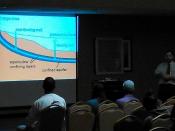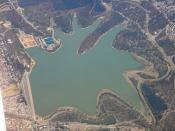Contents
3.1 Introduction 1
3.2 What Is ASR? 2
3.2.1 ASR Applications 2
3.2.2 Where Is ASR? 3
3.2.3 History of ASR 4
3.3 ASR In Adelaide 5
3.3.1 Development in Adelaide 6
3.4 Problems With ASR 7
3.5 Conclusion 7
3.6 Figures 9
3.7 References 10
List of Figures
Figure 1 Example of a functional ASR system 9
Figure 2 Groundwater for irrigation 9
3.1 Introduction
This report is intended to gather information and documentation on Aquifer Storage Recovery (ASR). The report descriptions contained emphasize ASR wells, ASR Applications, ASR in Adelaide and future trends and project development.
Because of growing populations, demand for water continues to increase throughout the world. These demands have led to conflicts between water users and have also contributed to endangering fish, partly because the amount of high-quality water in streams decreases during summer months. As a result, more water is being kept in streams, reducing the supplies available for drinking and irrigation.
As increasing stress is placed upon our natural water supply, alternative sources of water and methods of conservation are required. One promising alternative is ASR.
ASR is the storage and safe keeping of water in a well when water availability is sufficient, and recovery of the water from the same well when it is needed.
Water providers face the large water demands of summer that exceed supplies and winter supplies that exceed demands. ASR allows them to store water underground during periods of low demand or excess supply and then to extract it during peak summer months, when people need it most.
ASR is a tested and proven technology. While it is still considered innovative and new, it has already demonstrated its value at many locations all around the world. It is also good for the environment. The only water pulled...


